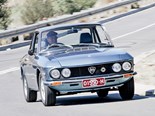1972 Lancia Stratos Review







|

|

|
Lancia's high-flying wedge was a turning point in rallying, bringing Ferrari engines and Supercar styling to the sport
From the archives: Unique Cars #289, August 2008
Even if a wedge profile makes sense for high performance cars, it has left too many otherwise good cars from the early 1970s with the emotional appeal of a door stop. One of the few exceptions is the Lancia Stratos which went from a 1970 Bertone dream car to one of the most successful rally cars ever built.
The Stratos draws its name from "stratosphere", as the original Bertone concept was out of this world, in more ways than one. Its radical windscreen angle and low roofline dictated that the only way anyone could get into the car, was to lift the windscreen, step up and over its needle-like nose without destroying it, while executing a mid-air twist before landing in a seat. Entering a wheelie-bin lying on its side suddenly seems easy.
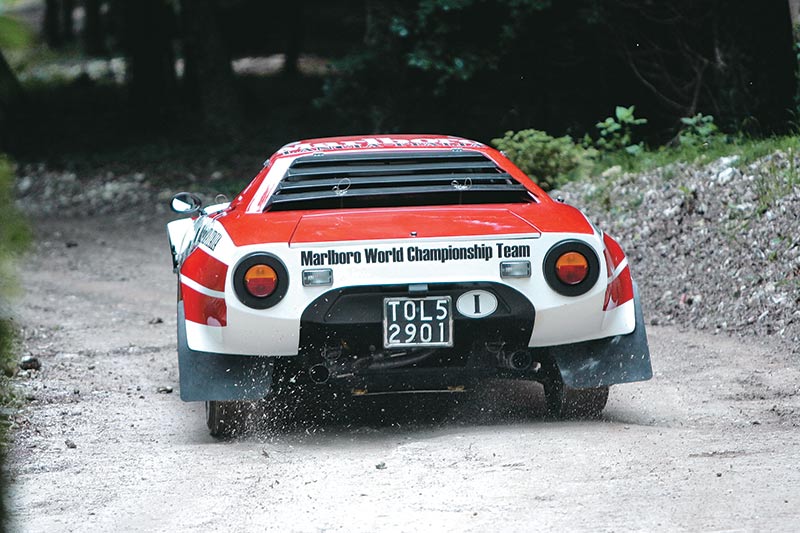
This mad, wild Stratos, which was initially powered by a front-drive Lancia Fulvia drivetrain longitudinally-mounted behind the cockpit but ahead of the rear axle, sparked an idea.
Lancia had been doing well in rallies with the Fulvia coupe, but some wicked dices with the Porsche 911 and Alpine Renault highlighted the importance of rear drive with an engine over the rear wheels for extra traction. This was before Audi moved the goal posts with its quattro AWD concept.
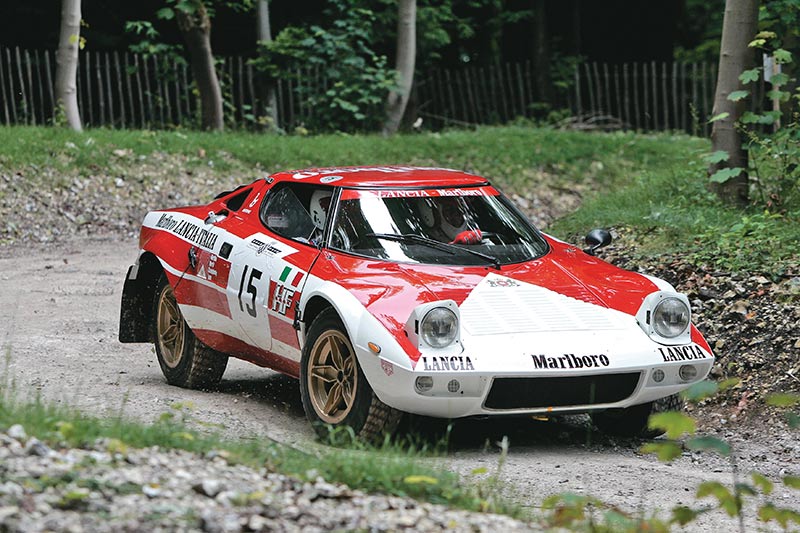
Even if the Escort BDA was pointing the way to the future (which Fiat would ultimately challenge with its mass-market 131 Mirafiori), Lancia decided to give it their best shot with a special homologation model that had absolutely nothing to do with any current Lancia production car.
With the Fiat-Lancia merger came the symbiotic relationship between Ferrari and Fiat that gave Fiat access to a version of Ferrari’s delightful V6 racing engine in return for mass-producing it, so that Ferrari could meet Formula 2 homologation requirements. Apart from powering the Dino 246 – which, incidentally, never carried any Ferrari identification – this engine also powered a superb Fiat Dino coupe and a stunning Spider.
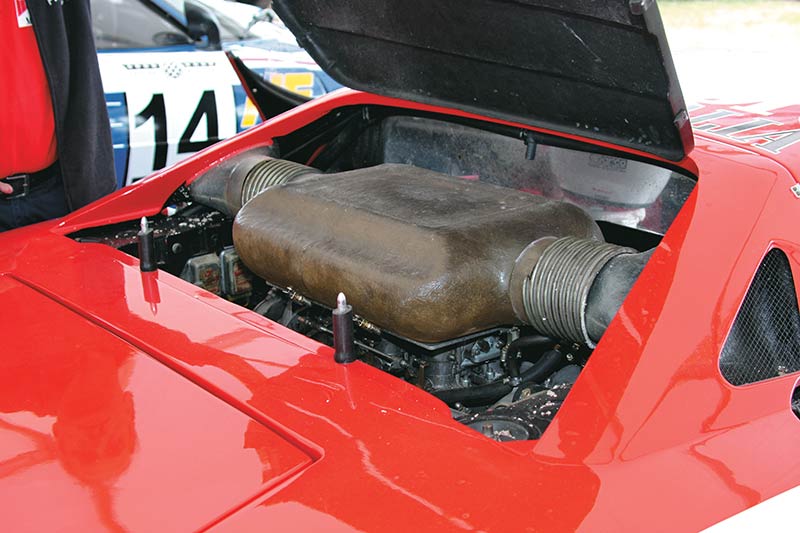
Although these Fiat Dinos carried the same Dino identification as the 246, their Fiat heritage was never hidden. As Fiat had already established a Turin assembly line to build the V6 engine and the 246 would ultimately be replaced by the V8-powered 308 GT4, building another 500 engines for a rally homologation special added some useful economies of scale. When the engine was as much associated with Fiat as Ferrari, there was no reason why it couldn’t also be linked with Lancia.
After examining the feasibility of fielding a rally version of the Dino 246, Fiat and Lancia abandoned the idea – it was too heavy and couldn’t offer the required rigidity and strength.
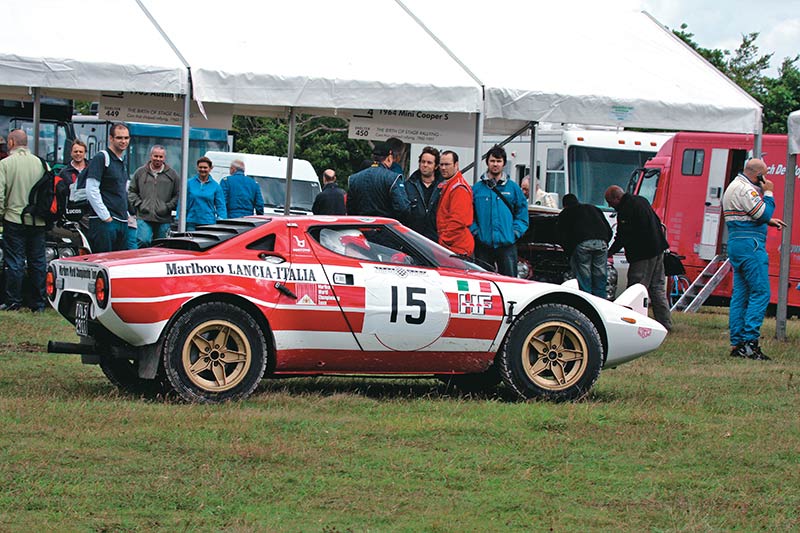
Lancia commissioned a more practical Stratos from Bertone in 1971. Because the new shape bore no resemblance to the 1970 dream car, it only required a little tweaking before it debuted as a serious rally special in November 1972, ready to win its first event in April 1973 and well before its October 1974 homologation.
To describe the rally or production version of the Stratos as a roll cage with box section frames attached front and rear, is oversimplifying it. Yet there is an element of truth in this – the approach was not much different to the racing VW dune buggies of the era.

Because the Stratos delivered a kerb mass of just under 1000kg and the Dino 246 engine generated 141kW in road trim – and over 200kW in rally trim – with the bonus of spectacular grip and toughness, it is worth a closer look.
The cabin was a stressed-skin monocoque box extending from the toe panel at the front to the deep rear firewall. It had tubular reinforcement hidden behind the doors and fake rear pillars that extended over the heads of occupants. Attached almost at driver’s head level was a box-section frame supporting the rear struts, ending in a square frame also supported by similar lower sections extending under the transaxle.
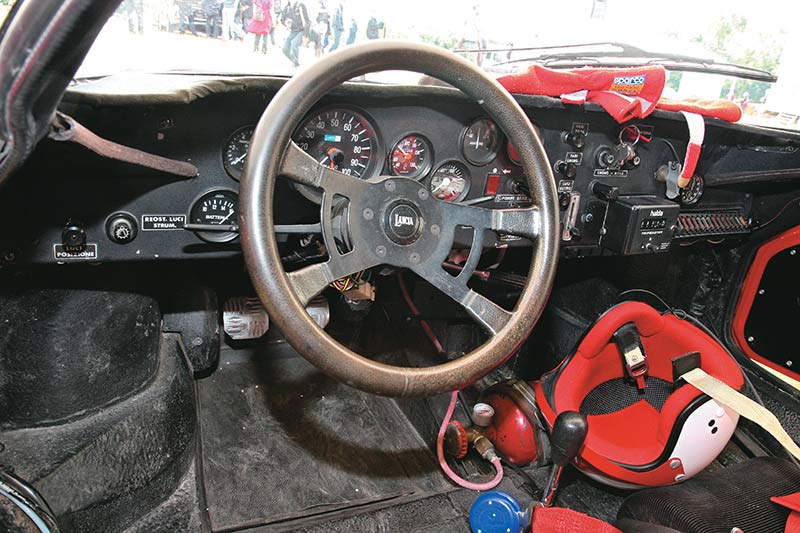
Box section extensions carried the double wishbone front end, based on Fiat 124 Coupe parts. A similar double wishbone at the rear broke early in development, when there wasn’t enough room to feed the stresses into the frame. By swapping the upper wishbone for a rear strut, combined with a triangulated lower wishbone similar to everyday Lancias and front-drive Mazdas, the forces could be fed into the upper frame members where they were the strongest – between the upper cross-member and tubular roof extensions.
This rear suspension design was also remarkably similar to the Lotus Elan’s Chapman strut. Even if the Elan was formidable on tarmac rallies, it was as fragile as a potato chip compared to the Stratos. Although out of character for an Italian car, the incredible strength of the Stratos was its ace card.

The transverse Dino engine with its quad cams and trio of twin-throat Webers was mounted over its five speed manual transmission – although the Dino’s polished gear lever gate was missing inside. The transverse engine allowed the fuel tanks to be sandwiched between the engine bay and the cabin.
The hardware finished well inside the rear wheels and the front section was just long enough for a spare wheel and various cooling functions. Bertone’s job was to shrink-wrap it in fibreglass. One-piece fibreglass front and rear sections that could be lifted in seconds, proved a big advantage for Lancia’s roadside spanner men, even if the shrink-wrapping dictated drivers of jockey-like proportions.
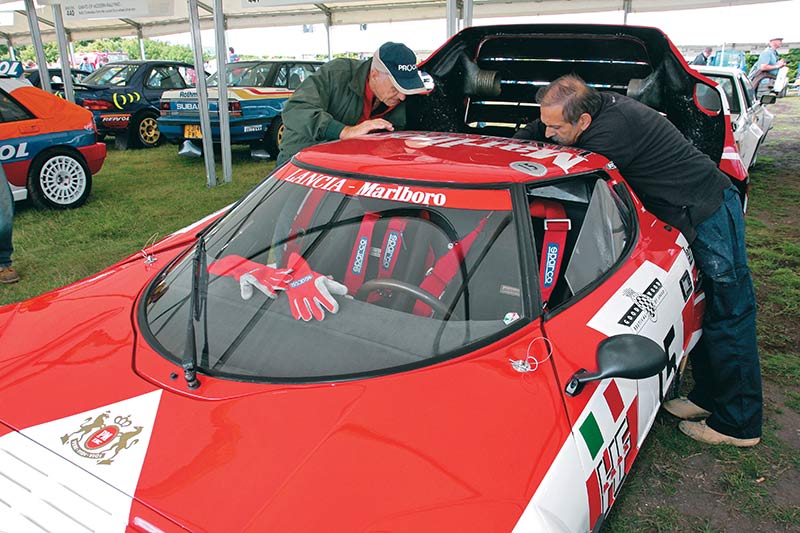
It was the curves, bulges and vents dictated by this rally focus, along with the weird aero-style windscreen, that stopped the Stratos from looking like another door stop. It only takes a cursory look to see several Bertone cues shared with the Lamborghini Urraco, Dino 308GT4 and various Maseratis.
Yet its proportions remained other-worldly; its length and wheelbase were similar to the first Honda Civic while the track was as wide as an XJ6 Jaguar from the same period. As the tiny Stratos challenged the laws of physics, these proportions ensured that drivers never really knew which end would let go first.

Even if it was almost a generation ahead of the original Dino 246, the Stratos was the alter-ego of the Dino: a tough, raw competition machine versus the sensuous, almost show-pony presentation of the 246. The Stratos repaid the favour for the use of the Dino’s drivetrain with a retrospective pedigree that was as valuable as any 911 rally victory.
It highlighted its true potential when Enzo Ferrari himself feared the V6 would corrupt his V12 models.
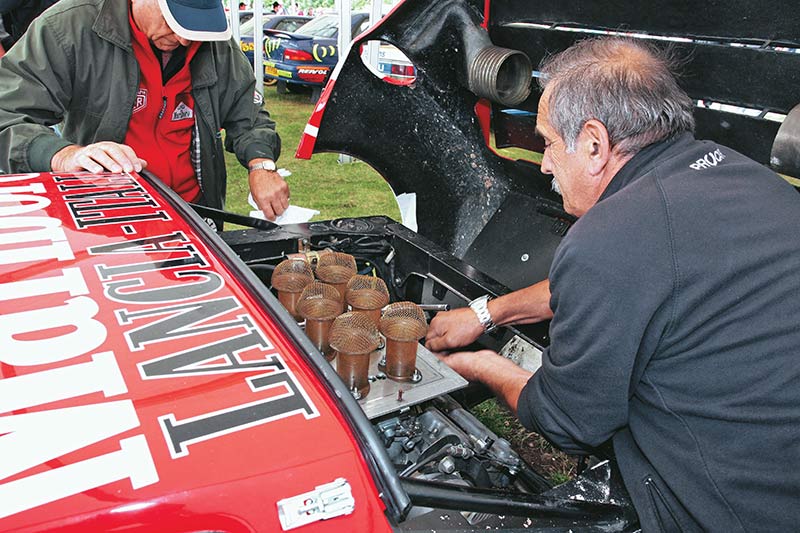
That wasn’t all. After the Stratos almost killed rallying, such was its invincibility, it ultimately led to the amazing Group B rally specials that combined the mid-engine layout of the Stratos with the all wheel drive of the Audi quattro. Because these "Killer Bs" were beyond the average rally driver’s ability to keep them on terra firma, they were banned almost as fast as they appeared. Not surprising really, when something from the stratosphere inspired them!
Unique Cars magazine Value Guides
Sell your car for free right here
Get your monthly fix of news, reviews and stories on the greatest cars and minds in the automotive world.
Subscribe

.jpg)








